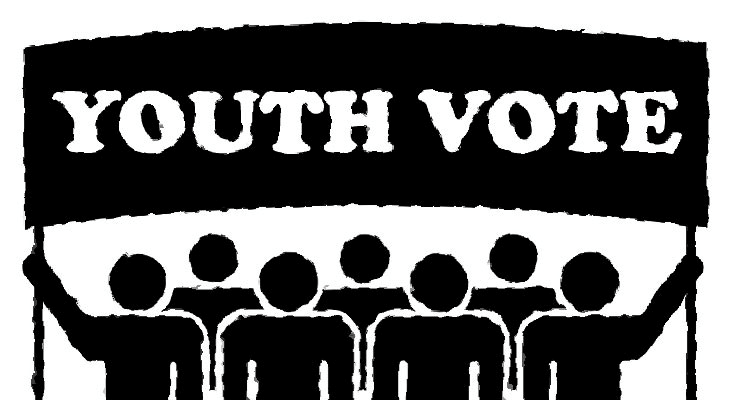4 October 2018
PPE: People, Policies and Economics
Voting patterns are now a function of age rather than class.
by Frank O’Nomics
 Conference season has long been nothing more than an irritant for most of us. As a child it forced decent TV onto the sidelines (well would you rather watch Blue Peter or Ted Heath?) and now it seems to be nothing more than a kite-flying exercise for wannabe PM’s and irrelevant policies – ok, if you work in a restaurant a fare share of tips probably does carry some weight, but for most of us it is not a vote winner. Beyond that it has been the usual tub-thumping by the Labour Party to make the unions (and their members) think they are towing the line, and assuaging middle class fear over Brexit from the Tories. But hang on – have they both got it all wrong? Are voting intentions still a function of class? The evidence would suggest that age, rather than income, has become a much greater determinant of voting choice and that the party which adjusts most successfully to cater for a range of generations could be the most likely to form the next government.
Conference season has long been nothing more than an irritant for most of us. As a child it forced decent TV onto the sidelines (well would you rather watch Blue Peter or Ted Heath?) and now it seems to be nothing more than a kite-flying exercise for wannabe PM’s and irrelevant policies – ok, if you work in a restaurant a fare share of tips probably does carry some weight, but for most of us it is not a vote winner. Beyond that it has been the usual tub-thumping by the Labour Party to make the unions (and their members) think they are towing the line, and assuaging middle class fear over Brexit from the Tories. But hang on – have they both got it all wrong? Are voting intentions still a function of class? The evidence would suggest that age, rather than income, has become a much greater determinant of voting choice and that the party which adjusts most successfully to cater for a range of generations could be the most likely to form the next government.
Analysis from the Resolution Foundation, in their forthcoming book, Brexit and the British Model, shows a remarkable shift in voting patterns by age. The last time that both major parties had around 40% of the vote, in 1974, age made no difference. The Labour Party in particular had around a 40% share of each age group, while the Tories did capture less of the youth vote and more of those older. A major change started in the 1990s, which has become much more pronounced since 2005, whereby now the Labour Party captures around 65% of the youth vote but less than 30% of those over 70. The move has been less pronounced for the Tories, who have lost a small share of the vote of those under 40, but have gained a lot more voters over the age of 60. Put simply, a 30 year old is now almost twice as likely to vote Labour as a 70 year old.
Compare this with the share of vote by social class. In 1974, at the wealthier end of the class spectrum (ABC1), 56% voted Tory and 19% Labour, while at the other extreme (DE) the split was 22% to 57%. Now the differences are very marginal, 44% Tory vs. 40% Labour for ABC1 and 41% to 44% for DE. Interestingly, those classed as C2 now vote equally across the parties, having favoured Labour at 49% vs. 26% Tory in 1974. It has then become very difficult to assert that voting patterns are allied to class.
What are the implications of this shift? In some respects it goes towards explaining why we have not seen a clear majority for any party in recent elections. For every young voter won over by the Labour Party they have lost a pensioner it seems. With an ageing UK population the evidence should be quite worrying for the Labour Party – focusing on a declining demographic may not be too smart, especially one that is historically disinclined to vote. Even in the last election the much-discussed “youthquake” appears to have been a fiction. Interestingly, the age at which both parties have an equal share of the vote is exactly the same as it was in 1974, around 60 years old. This suggests that voters approaching retirement, or those who are newly retired have become increasingly concerned about the prospects of a Labour government. The lack of a revival of recent arguments for wealth taxes may be an acknowledgement of this – there are a lot of people on modest incomes who have become “asset rich” from the rise in the value of their property and the value of their index-linked defined benefit pension who are wary of any threat to a comfortable retirement.
Does this mean the Tory party should relax? Certainly not. The loss of the youth vote is going to be very hard to turn around given the difficulties of sorting out issues such as the housing crisis, and funding for education while the elderly vote will be vulnerable to any threat to the NHS in particular. The Budget at the end of this month will be a largely dull affair. Despite public finances having seen something of an improvement there will be little to give away. However, it will be interesting to see how Peter is robbed to pay Paul. Pledging more money to health and education as a result of cutting the tax benefit of pensions savings (remember it is age not class/wealth that matters more) would seem to be an obvious route to stem the loss of younger voters and maintain the votes of the elderly.
There are clearly some other more recent factors that may have exacerbated the shift in voting demographics – not least the prospect of Brexit. However, the evidence from the party conferences would suggest that both parties are living in a 40-year time warp. The Budget may signal some shift in policy emphasis and the calling of a general election (not a remote prospect) could see some interesting adjustments to manifestos. For now, however, it looks as if the trend has further to run, with the net result being that the 2 major parties share over 80% of the vote between them and neither attains a majority that will allow then to do very much. Now, enough of that, what time does Blue Peter start?


